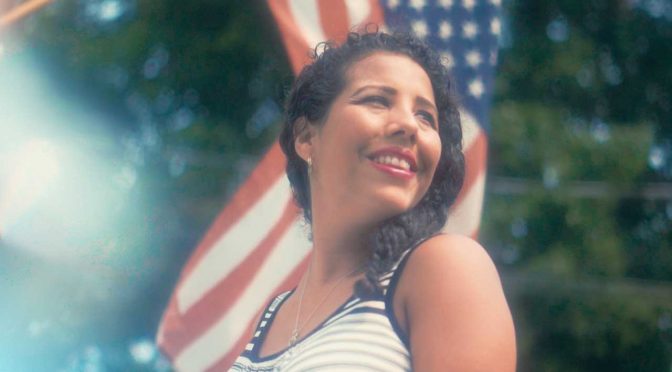In today’s video, I show seven simple techniques used by cinematographers to create beautiful images.
Here is more info about the seven hacks.
- Angle and Framing
- Shallow DOF
- Slow Motion
- Fill Light
- Soft Glow
- Light Flare
- Color Grading
This is mainly about deciding what to include and not include in the shot (sort of like editing). It is also about taking a lot of shots and then reviewing them. This way, you’ll develop an eye for what looks good.
I cover this topic extensively in my first ever tutorial “Make Video Look Like Film: Shot Design“.
To make your images cinematic, you oftentimes want narrow depth of field. To do this, you open up the lens as much as you can (i.e. use a low f/stop number). Also, the longer the lens (the larger the focal length), and the closer the subject, the narrower the depth of field will be.
In portrait shots, which is what I have in the video, you want to draw all the attention to the subject, which is why you keep the foreground and background out of focus. That does not mean you should always have shallow depth of field. In wide landscape shots for example a shallow DOF might look horrible. DOF is a tool so use it accordingly to the situation!
To learn more about controlling the dept of field, please see my tutorial “Understanding and Controlling the Depth of Field“.
Slow motion makes everything look epic and dramatic. To achieve it, film at a higher frame rate than what you’ll use for playback.
If your camera doesn’t allow higher frame rates, shoot at 24 or 30 fps, but then slow it down in editing. The resulting clip will be a bit choppy, but you’ll get the slow motion effect nonetheless.
You can see how to create slow motion in my tutorial “Making of “Epic Fruit Ninja” – Creating Slow Motion”.
This is about using any reflective, i.e. white, or metallic, surface like paper, Styrofoam, or professional reflector, and reflecting the light to the darker side of the subject. This evens out the shadows.
You achieve this by applying Vaseline to the lens. It is an old cinematographers’ trick. It softens the image, and makes it more dreamy, and less life-like.
You don’t want to use too much of the Vaseline. Just smear a small amount, and then use a tissue to take off most of it, leaving only a very thin layer. That is the simplest and fastest way, which is why I show that in this quick video. It doesn’t mean that is the only or best way of getting that soft glowing effect.
Problem with applying Vaseline directly to the lens is that you then have to clean up that grease from your lens. It might be okay if it’s an old lens, but with a new expensive lens you will be better off just putting on a clear UV filter and then applying the Vaseline onto that. Even better solution is to use another old cinematography trick of tightly stretching a thin stocking over the lens. But of course the best way to do this is to simply get some SOFT FX filters that do this well without degrading your image too much. My favorite is the Tiffen Black Pro-Mist 1/4 strength diffusion filter. It creates a great softening effect and adds a nice glow to the highlights but in a very subtle way.
This technique is especially useful for female subjects. It helps hide imperfections on the skin, etc.; and makes the image more pleasing to the eye.
You can add lens flares by putting reflective objects in front of the camera. You can use many common objects, for example, a drinking glass, a knife. So, you can use any piece of glass or anything metallic.
Put the object right in front of the lens, or a few inches in front of it. Then, rotate the object until you see the flare in your shot.
Color grading can be very stylized or subtle. If you want a stylized, cinematic shot, you generally don’t want colors to look the same as in real life.
If you don’t have experience color grading, a great shortcut is to use LUTs. I have some free LUTs on my Downloads page. I also give away a few LUTs to those who sign up to my newsletter.
The LUT I used in the video is called Sandigo. It’s one of the LUTs I include in the welcome package for the newsletter subscribers.
These are by no means all the cinematography tricks that pros use. Also, it doesn’t mean that you have to use them all to make your video cinematic. I picked these ones because they don’t cost anything, but can help any filmmaker get the film look in their videos. So, have fun experimenting!
If you have questions about these techniques, please let me know in the comments section below.

